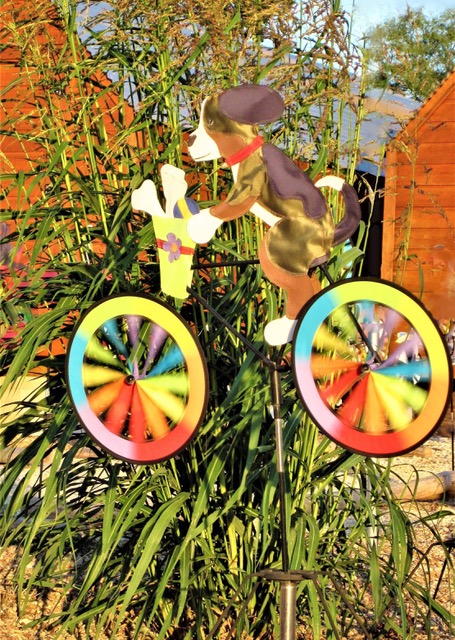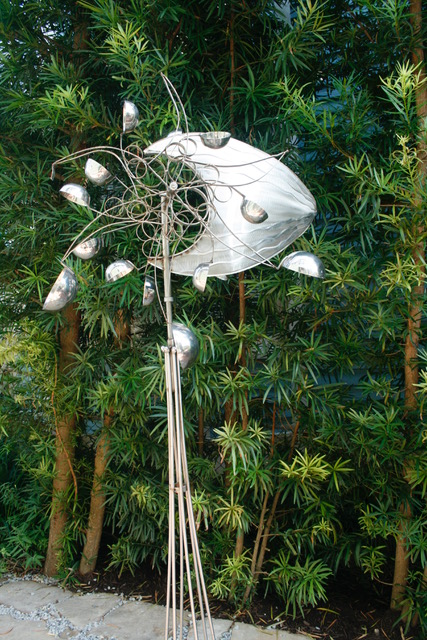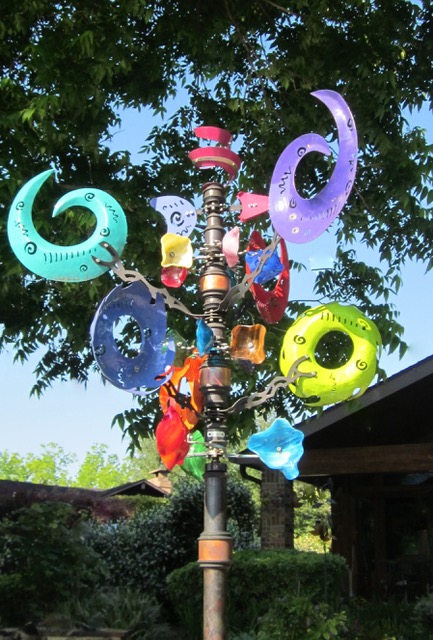Blowin’ in the wind
March brings breezes sharp and chill
To stir the dancing daffodil.
Sara Coleridge
Whirligigs, gee-haws, spinners, call them what you will; it’s March, the master month of winds, and there’s no better time to display a breeze-driven garden ornament. So take your pick…the selection ranges from simple pinwheel-like spinners, to folksy depictions of wood choppers, to intricately rotating, three-dimensional works of art.

No one knows exactly where or when the first whirligig was made, but many folks believe that the spinning hand toys cherished by Native American children as early as 500 BC were early prototypes of what later became known as “button whirligigs.” Around 400 BC “string whirligigs” emerged in China. The user set these gadgets in motion by rubbing a stick against a shaft.

Although the evolution of whirligigs in the United States is unclear, constructing wind-driven whirligigs had become an art form by the latter half of the 19th century. Craftsmen in the southern Appalachians were particularly adept, often constructing intricate mechanisms that produced motion and sound. There, every time the wind blew primitive figures chopped wood, herded sheep, and churned butter. In Appalachia, art imitated life with rustic precision.

Eventually, whirligigs attained the status of American folk art. As such, whirligigs earned places in museums; renowned authors referred to them in their works; they became the focus of festivals; and they were included in movies. Who can forget the foreboding scene in Hollywood icon Helen Hunt’s fan-favorite film “Twister” when a collection of the kinetic artworks ominously whirled, twirled, and jingled in Aunt Meg’s front lawn!

Not surprisingly, the word whirligig is derived from two words whirlen and gig which means “to whirl” and “top”. The word was first used in the 14th century.

Today, whirligigs are prized as kids’ toys, garden pest repellers, yard art, and art. And there’s no shortage of the spinning curiosities: shop for them at garden stores, nurseries, flea markets, and craft fairs. Vendors hawk whirligigs alongside highways. They are available online.

And styles are as varied as materials. There are laser cut metal works of art, cedar wind spirals, and copper dual spinners. There are stainless steel wind sculptures that swivel in the breeze. There are modern versions of animated wood choppers. There are simple plastic pinwheels, not to mention nylon whirligigs in fluorescent hues that feature creatures great and small.

Whirligigs operate by transferring captured wind into a rotational force which drives moving parts. When selecting a location to display a whirligig consider decks, docks, and open spaces. Or, pick a spot in the garden where you can enjoy their value as art or where you need a focal point.
Whether simple, elaborate, folksy, or one-of-a-kind art, whirligigs welcome March and her storied winds by setting the garden in motion.
